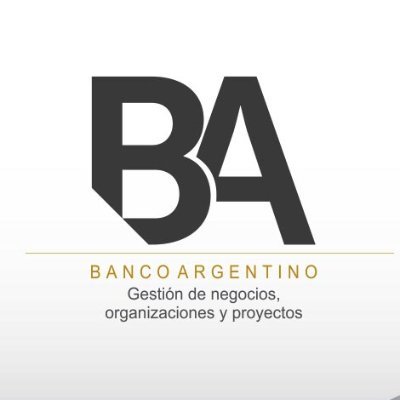What if there is no creation as memorable as the Singer sewing machines. Although the founder of this company did not invent such a device, his design revolutionized the market. And, among so many anecdotes, he left a architectural legacy which was the center of suspicion for alleged espionage.
The American Isaac Merritt Singer gave rise to a commercial empire based on one of the best-selling products in history. The fact is that the practicality of these devices back 1851along with the possibility of acquiring them through payment in installments, production rates changed and the way seamstresses work.
Not as well known as the memories he left in families, are his architectural emblems. One of them was the Building Singera New York skyscraper that reached 187 meters high and was demolished in 1968.
Another symbol was in his factory Clydebank, Scotlandwhere stood a huge clock four-sided, also taken down some time later.
But the one that remains standing and receives an overwhelming number of visitors today is the book housein Saint PetersburgRussia, antigua Casa Singer. Those who commissioned its construction probably did not imagine that they would end up doing the largest bookstore and famous of this Russian city.
Tensions between the American client and the Russian architect
Located between two unique places – it is in front of the Kazan Cathedral and a few blocks from the Church of the Savior on Spilled Blood-, the Book House is located on Nevsky Prospekt, the main avenue of the city.
Are inauguration in 1904 was achieved after overcoming some conflicts between the claims of its investors – the American owners of the company Singer-, and the Russian architect Pavel Suzor.
 The location of the former Singer House is in the center of St. Petersburg. Photo: Archive
The location of the former Singer House is in the center of St. Petersburg. Photo: ArchiveThe latter, who had already participated in the construction of a hundred houses in St. Petersburg, insisted that The height of the project could not exceed 23.5 meters.
It happens that the city founded by Peter the Great, in line with international standards for the protection of architectural heritage, did not allow the mythical to be surpassed Winter Palace.
Of the eight flats ambitions of the client, finally six were builtwith facades covered in high-quality granite in red and gray tones. Of course, a glazed dome in the corner of the complex, where a globe stands out at the top.
In any case, that was not the only difference in criteria, generated largely because the company I had as models buildings in New York.
But Suzor, who was during a year doing the design of the workremained firm in his eclectic style that mixed the Art Nouveau –reflected in its interiors- and classicism.
Thus the relationship became strained, to the point that by the summer of 1901, the Russian architect presented three designs to the owners of the land.
It had to happen another year of discussions until it was approved – it had the permission of Tsar Nicholas II – and the local vision was imposed. Even so, the final result did not avoid criticism from some residents.
What was in the Singer House in Saint Petersburg during its beginnings?
The interest of invest in a country so far away to its parent company was based on four decades of trade: Singer sewing machines – coming in this case from Germany – had already been in Russia since the 1970s. 1860.
Before the great architectural work that would become a historical monument, the industrial company had opened a workshop in Volgogradand at the end of 1890 they built a factory in Podolsknear Moscow.
 Advanced technologies were used in the work. Photo: Archive
Advanced technologies were used in the work. Photo: ArchiveFinished the ambitious constructionwhich had the most advanced technologies of the time – including a innovative metal structure and an automatic steam supply for cleaning snow on the roof -, the commercial representation of Singer It already had its offices available.
But the building also housed a important business center: banks, commercial companies, and the New York Insurance Company. Furthermore, he was involved in espionage accusationswhich led to a decisive decision.
Amid espionage accusations, a place for the American consulate
The World War I and the belligerents who faced each other were, among others, the German Empire against the United States and the Russian Empire. The susceptible warlike spirits among the Russian population They associated Singer with the Second Reichby the mere German surname of its founder.
The building, which had symbols of the North American nation, and even had its eagle on the façade, did not fail to cause negative reactions in public opinion.
Although the company was dedicated to making uniforms for the Russian armysuspicions did not stop growing. What sense would it make to send company representatives to carry out espionage activities in favor of the Central Powers, while at the same time dressing enemy soldiers?
The accusations, before becoming a tinderbox, were eradicated with a resounding decision: towards the end of the conflict, the management rented the ground floor to the American consulate for a short period.
 The First World War came to the Singer House. Photo: Shutterstock
The First World War came to the Singer House. Photo: Shutterstockown American consulNorth Winship, addressed the rumors, in a telegram addressed to the Secretary of State of your country on March 20, 1917.
«I have had to defend the American eagle on top of the building, since It was believed to be a German eagle and the crowd tried to tear it down, until I explained the difference in Russian between the American and the German eagle»he said in a then confidential document.
The Book House and its resistance during World War II
Five years after the russian revolution of 1917the company left the Soviet Union and the building opened a publishing house and a bookstore in charge of the State.
Being one of the most popular in the USSR, the bookstore only closed for three months during World War II. More specifically in November 1941, when the burst A bomb in a nearby building broke the store’s windows.
The employee reaction was impressive: they used wood to cover the openings in the windows and they continued workingaccording to Ekaterina Chernoberezhskaia, a local guide.
Once the war conflict was over – known to the Russians as Great Patriotic War-, the damaged building was restored because of the bombings.
At the moment The bookstore occupies three floors. and you can buy souvenirs. Furthermore, it works Café Singerwith an unparalleled view of the beautiful Kazan Cathedral.
Some of its many exterior decorations are valkyriesrepresenting industry and navigation. One of these female deities, from Norse mythology, He has a sewing machine next to him. An image that unites the economic support through which the work could be erected, with the assistants of the god Odin, who chose the most heroic fallen in battle.





